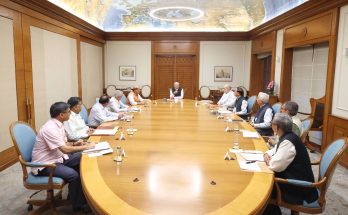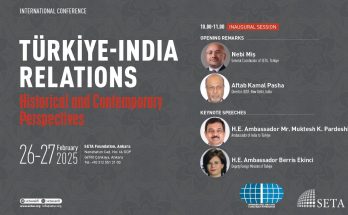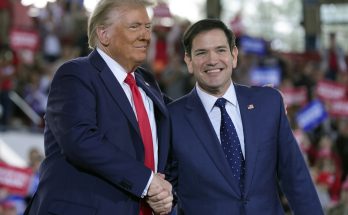 Football aficionados identify Fortaleza as the venue of Brazil-Colombia quarter-final match where Brazilian superstar Neymar Jr. fractured a vertebra, causing national gloom. The picturesque city is, however, fast entering into the lexicon of international affairs. Located on the north-eastern coast of Brazil, Fortaleza will host the sixth BRICS Summit on July 15.
Football aficionados identify Fortaleza as the venue of Brazil-Colombia quarter-final match where Brazilian superstar Neymar Jr. fractured a vertebra, causing national gloom. The picturesque city is, however, fast entering into the lexicon of international affairs. Located on the north-eastern coast of Brazil, Fortaleza will host the sixth BRICS Summit on July 15.
As a multilateral grouping, BRICS, comprising Brazil, Russia, India, China and South Africa, is relatively new, but it has attracted considerable interest globally. Five years since the first summit in 2009, this is an apt moment to reflect on its journey so far and the future trajectory.
Prime Minister Narendra Modi, leading the Indian delegation, will be a star attraction as this will be his first appearance on the international stage in the backdrop of India’s rising stature.
Diversity of Perceptions
B RICS accounts for 26% of world’s land mass, 46% of its population, 18% of its GDP, 16% of its exports (in 2011) and 20% of its investment.
RICS accounts for 26% of world’s land mass, 46% of its population, 18% of its GDP, 16% of its exports (in 2011) and 20% of its investment.
Presenting a balance sheet of its achievements and shortcomings is a complex task due to the gap between its critics and advocates. Besides, there exist divergences among five member-states, despite their brave endeavours to forge unity and cooperation. Academics debate whether BRICS is a “Bargaining Coalition, Imagined Community or Geopolitical Fad.” A few dismiss it as “a distraction” or “an artificial construct.”
But, leading scholars, diplomats and media recognise its geopolitical and geo-economic importance. A senior Brazilian official recently called it “a positive force for the democratisation of international relations.” South Africa’s President Jacob Zuma told journalists last year: “BRICS is not a talk show. It is a serious grouping.” BRICS has a real opportunity to prove its worth at Fortaleza.
Genesis and Evolution
Media reports routinely trace the birth of BRIC to Jim O’Neil of Goldman Sachs who in 2001 had coined the phrase and predicted the rise of four emerging economies and displacement by them of developed economies. One should, however, not ignore two other intellectual and diplomatic streams that moulded the rise of BRICS.
Firstly, the Russia, India and China (RIC) grouping has been in existence since 1996. Through its dozen meetings of foreign ministers between 1996 and 2012, it created shared perceptions and habits of working together in the political domain. Secondly, India, Brazil, South Africa (IBSA) Dialogue Forum was launched with the adoption of the Brasilia Declaration in June 2003. Through its five summits between 2006 and 2012, it shaped a useful tri-continental partnership among leading democracies from Asia, Africa and Latin America.
The BRICS process began with diplomatic coordination among four countries in 2006, followed by the first meeting at the level of foreign ministers in 2008. Between 2009 and 2013, five summits took place – two of the BRIC countries at Yekaterinburg and Brasilia, and three of BRICS countries at Sanya, New Delhi and Durban. The first cycle of summits having been completed, Fortaleza represents the beginning of the second cycle.
The Journey Continues: Three Cs
Three Cs –- Common vision, Coordination, Cooperation –- have stamped the previous summits and their joint declarations. The second summit defined the common vision by articulating “support for a multipolar, equitable and democratic world order.” At the Durban summit, the participants announced their aim to progressively develop BRICS into “a full-fledged mechanism of current and long-term coordination on a wide range of key issues of the world economy and politics.”
The element of coordination marks the member-states’ shared perceptions and views on a wide range of subjects concerning international economy, G-20, reform of global governance institutions, enhancing flow of development finance to emerging and developing countries, open, transparent and rules-based multilateral trading system, climate change and energy questions. On political issues, the BRICS menu has kept expanding from perennials like counter-terrorism and the Israeli-Palestinian conflict to subjects such as Syria, Afghanistan, Iran and Africa.
In reforming global governance, a key strategic objective of the grouping, BRICS has had only limited progress. It supports quota and governance reform of IMF, which is stuck due to the US Congress’ failure to ratify it. BRICS managed to get its candidate, a Brazilian, elected as the director general of WTO. On reform of the UN Security Council, it has a common position, but it is so infirm that it reveals internal fissures rather than unity. Leaders of Russia and China must review it.
In contrast, the domain of ‘cooperation’ has registered steady progress, especially since the Sanya Summit which developed a plan, borrowing some ideas from the successful model of IBSA. At the Delhi Summit, the conclusion of two important agreements was hailed, which pertained to i) extending credit facility in local currency under an interbank cooperation mechanism, and ii) the multilateral letter of credit confirmation facility among Exim/developments banks.
Even the bigger idea of setting up a New Development Bank (NDB), reportedly with an initial subscribed capital of $50 billion, for mobilizing resources for infrastructure and sustainable development projects in BRICS and other countries, emerged at the Delhi Summit. At the Durban Summit, the leaders declared the NDB to be a viable institution. Another important proposal under consideration is finalisation of the Contingent Reserve Arrangement (CRA) of $100 billion as a new mechanism to cope with balance of payments difficulties. The progress on these two issues will enhance the credibility and clout of BRICS.
Intra-BRICS cooperation has been developing reasonably well in spheres ranging from national security, agriculture, public health, science and technology to urbanization and energy. New mechanisms have been created to spur cooperation in selective domains. The Think Tanks Council and the Business Council will be of special importance in future.
A significant innovation was introduced at Durban for intensifying the engagement and cooperation with the non-BRICS countries by organizing a Retreat with African leaders. This outreach will be continued at Fortaleza where BRICS leaders would have an interactive meeting with the leaders of UNASUR, the Union of South American Nations.
Future Prospects
T oday, the very mention of the word ‘Brazil’ invariably evokes stunning images of the World Cup rather than the nitty-gritty of international economy and politics. Our soundings with experts indicate that expectations from the Fortaleza Summit are not very high. But leaders can prove experts wrong!
oday, the very mention of the word ‘Brazil’ invariably evokes stunning images of the World Cup rather than the nitty-gritty of international economy and politics. Our soundings with experts indicate that expectations from the Fortaleza Summit are not very high. But leaders can prove experts wrong!
The international environment since the Durban Summit has been characterised by rising tensions in relations between the West, particularly the US, and two members of BRICS — Russia and China — due to recent developments in Ukraine and East Asia. World economy indicators point to low growth in developed economies and slower growth in BRICS economies. These factors are hardly congenial to reforming the world order, a fundamental aim of this grouping. Therefore, what we may expect is measurable progress on consolidation and expansion of intra-BRICS cooperation.
By announcing the establishment of NDB and CRA and articulating a shared worldview, BRICS leaders can compel the world to take them more seriously. In my view, the chances are that they will.
BRICS has its work cut out. It has to grapple with an essential fact: much like players in a football game, it has to keep running with a clear aim in view; if it stands still, it will lose the momentum and the match itself!
(Mr Rajiv Bhatia is a veteran diplomat and Director-General of the New Delhi-based Indian Council of World Affairs, the country’s premier think tank. This article has been written exclusively for India Writes Network, www.indiawrites.org, a portal and e-journal focused on international affairs and the India Story. The article reflects his personal views.)
Author Profile
Latest entries
 DiplomacyJuly 11, 2014The BRICS journey: Scoring high in Fortaleza
DiplomacyJuly 11, 2014The BRICS journey: Scoring high in Fortaleza China ConnectJune 9, 2014India’s options: Peace and Conflict in East Asia
China ConnectJune 9, 2014India’s options: Peace and Conflict in East Asia India and the WorldOctober 15, 2013Indonesia and India: ‘Companion Souls’ as Strategic Partners
India and the WorldOctober 15, 2013Indonesia and India: ‘Companion Souls’ as Strategic Partners China ConnectSeptember 5, 2013It’s time to alter perception of India and China as rivals
China ConnectSeptember 5, 2013It’s time to alter perception of India and China as rivals






